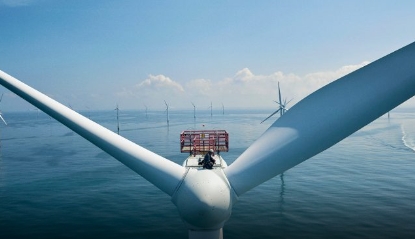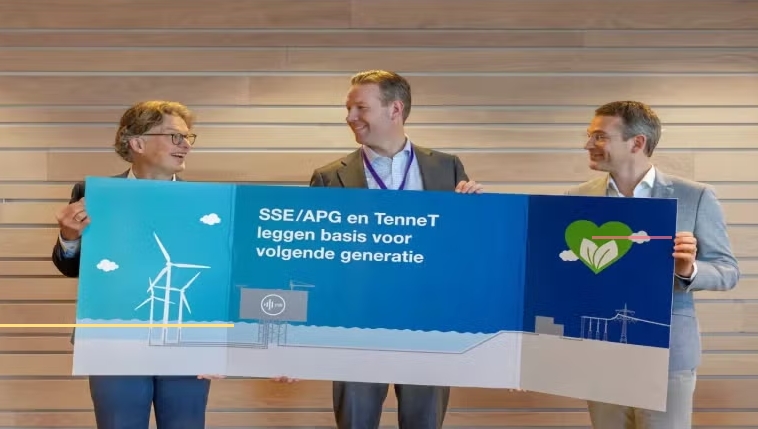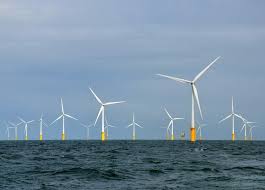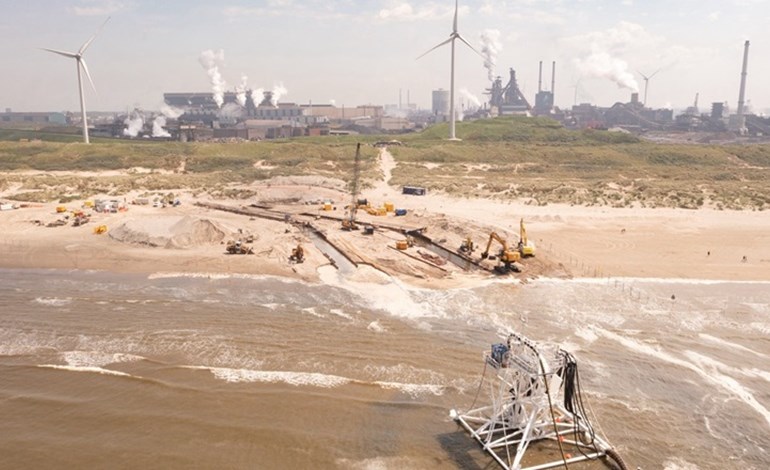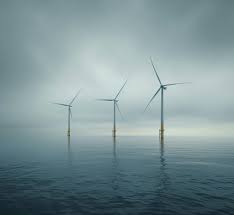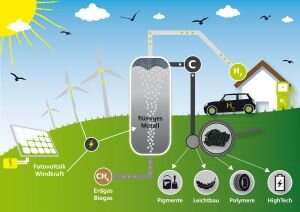 Methane pyrolysis by means of a bubble column reactor allows for the climate-friendly use of fossil natural gas. Credit: Leon Kühner, KIT
Methane pyrolysis by means of a bubble column reactor allows for the climate-friendly use of fossil natural gas. Credit: Leon Kühner, KIT
In the current energy debate, hydrogen is increasingly considered a key to the success of the energy transition. Experts of the International Energy Agency IEA calculated that admixture of 20% of hydrogen in the European gas grid could reduce CO2 emissions by 60 million tons per year. This corresponds to about the amount emitted by Denmark in a whole year. "Direct thermal cracking of methane and other hydrocarbons is a way to produce hydrogen from natural gas without direct CO2 emissions," explains Professor Thomas Wetzel of KIT's Institute of Thermal Process Engineering. For this purpose, his team, in cooperation with the Institute for Advanced Sustainability Studies e.V. in Potsdam, developed a process for the continuous decomposition of methane in a bubble column reactor filled with liquid metal to produce hydrogen and solid carbon. As a pure solid, carbon can be stored safely and be used in many industrial sectors. Hydrogen is a clean source of energy and can be used for the production of electricity and heat and in the mobility sector or in industrial processes, such as for the production of steel.
Research Collaboration with Wintershall Dea
In a joint project scheduled initially to run for three years, KIT and its industry partner Wintershall Dea plan to lay the foundations for future industrial use of methane pyrolysis within the next three years. "There are huge quantities of natural gas worldwide and it can be used in a climate-neutral way. We now want to study how this can be achieved efficiently and use the results for processing large quantities of gas later on," Wetzel says. "We are looking forward to this collaboration and are confident that we can make a major contribution to sustainable energy supply in the future." Hugo Dijkgraaf, Member of the Board and Chief Technology Officer of Wintershall Dea, says: "The perspectives we are creating as part of our cooperation with KIT show that natural gas is fit for the future. Natural gas already is the cleanest conventional source of energy. Yet, it can become even more climate-friendly in the future, if we separate the CO2 and use the natural gas to produce hydrogen."
